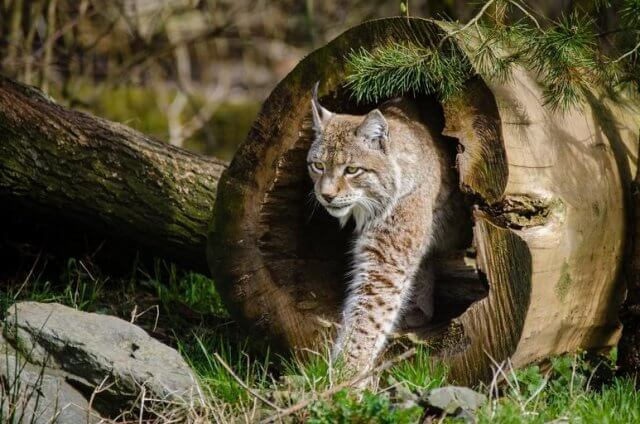Wild and Free: Witnessing the Playful Spirit of Bobcats in Their Natural Domain
Wild and Free:
Bobcats, with their elusive nature and captivating beauty, have long been a subject of fascination for wildlife enthusiasts and researchers alike. These medium-sized wild cats, native to North America, possess a unique blend of grace, agility, and adaptability that allows them to thrive in a variety of habitats. In this article, we will delve into the world of bobcats, exploring their behavior, habitat, and the importance of preserving their natural domain.
The Elusive Bobcat
Bobcats (Lynx rufus) are solitary creatures, known for their elusive nature. They are primarily nocturnal, making it challenging to observe them in the wild. However, with patience and the right techniques, researchers have been able to gain valuable insights into their behavior.
One fascinating aspect of bobcat behavior is their playfulness. Despite their solitary lifestyle, bobcats engage in playful activities, especially during their early years. They can be seen pouncing, chasing, and wrestling with objects or each other. This playful behavior not only helps them develop essential hunting skills but also serves as a form of exercise and mental stimulation.
Wild and Free: Habitat and Adaptability
Bobcats are highly adaptable creatures, capable of thriving in a wide range of habitats. They can be found in forests, deserts, swamps, and even suburban areas. However, they do have specific habitat requirements to ensure their survival.
Bobcats prefer areas with dense vegetation, such as forests or brushy areas, as it provides them with cover for hunting and protection. They are also known to establish their dens in secluded spots, such as caves, hollow trees, or thickets.
Interestingly, bobcats have shown remarkable adaptability to human presence. They have been observed living in close proximity to urban areas, utilizing green spaces and even backyards as part of their territory. This adaptability highlights their ability to coexist with humans, given the right conditions.
The Importance of Preserving Their Natural Domain
Preserving the natural domain of bobcats is crucial for their long-term survival and the overall health of ecosystems. Here are some key reasons why their habitat conservation is essential:
- Biodiversity: Bobcats play a vital role in maintaining biodiversity by regulating populations of their prey species. As efficient predators, they help control the population of small mammals, such as rabbits and rodents, which can have significant impacts on vegetation and other wildlife.
- Ecosystem Balance: By keeping prey populations in check, bobcats contribute to maintaining a balanced ecosystem. This balance ensures that no single species dominates, preventing cascading effects on other organisms within the food web.
- Indicator Species: Bobcats can serve as indicators of ecosystem health. Their presence or absence can provide valuable insights into the overall well-being of an ecosystem. Declines in bobcat populations may indicate environmental degradation or the loss of suitable habitat.
- Ecotourism and Education: Bobcats, with their charismatic nature, can be a significant draw for ecotourism. By preserving their natural habitat, we can create opportunities for people to witness these magnificent creatures in their wild and free state. This, in turn, can raise awareness about the importance of conservation and inspire future generations to protect our natural world.
Conclusion
Wild and Free: Bobcats, with their playful spirit and adaptability, are a testament to the wonders of the natural world. Understanding their behavior and habitat requirements is crucial for their conservation. By preserving their natural domain, we not only ensure the survival of these magnificent creatures but also contribute to the overall health and balance of ecosystems. Let us cherish and protect the wild and free spirit of bobcats, allowing future generations to witness their beauty and grace in their natural habitat.
By establishing protected areas, restoring habitats, conducting research, and raising public awareness, we can ensure the long-term survival of the Bobcat and preserve the delicate balance of our ecosystems.
Read More About Bobcats From Wikipedia




